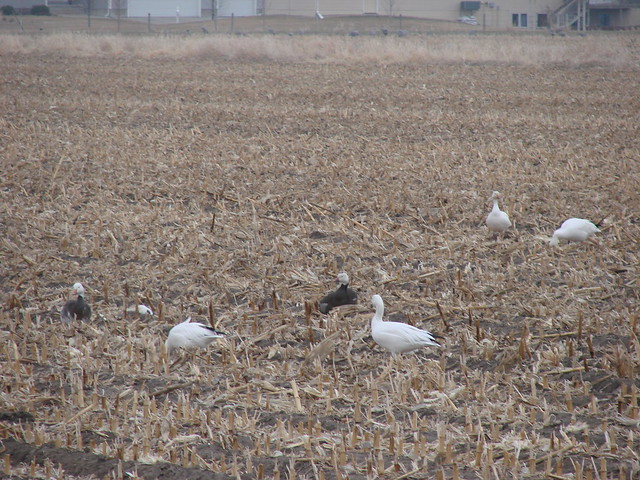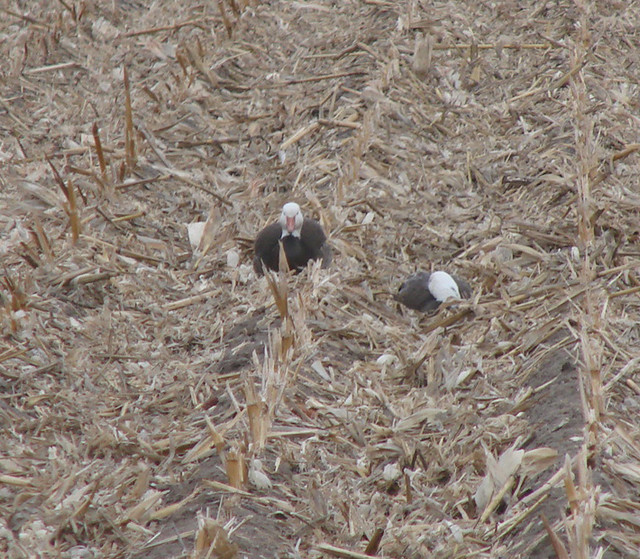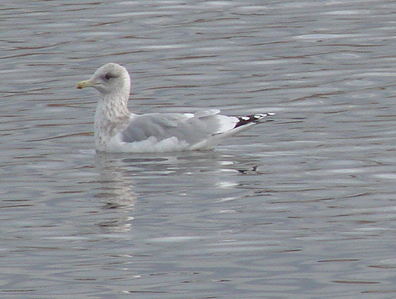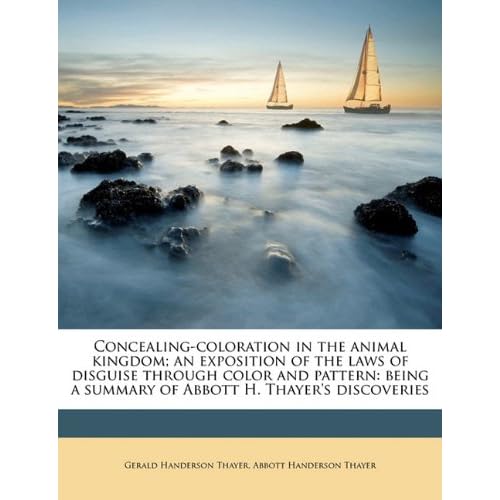Another beautiful morning at Jericho Park, spring threatening to break out all over in spite of the gray skies.
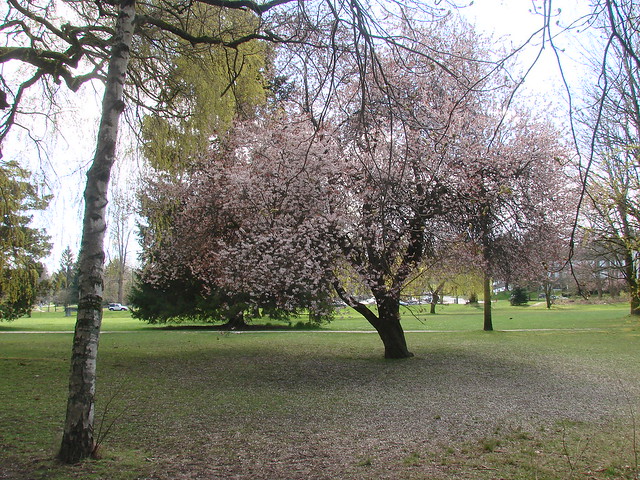
I’d gone in hopes of passerine migrants, and there were plenty of Audubon’s (and a couple of Myrtle) Warblers and Golden-crowned and Ruby-crowned Kinglets around. But the best bird of the morning was a falcon, a tiny male American Kestrel that floated south through the bunny theater, sending the Golden-crowned and White-crowned Sparrows scampering off into the brush.
Bigger raptors were easy to find, of course: just listen to the Northwestern Crows.
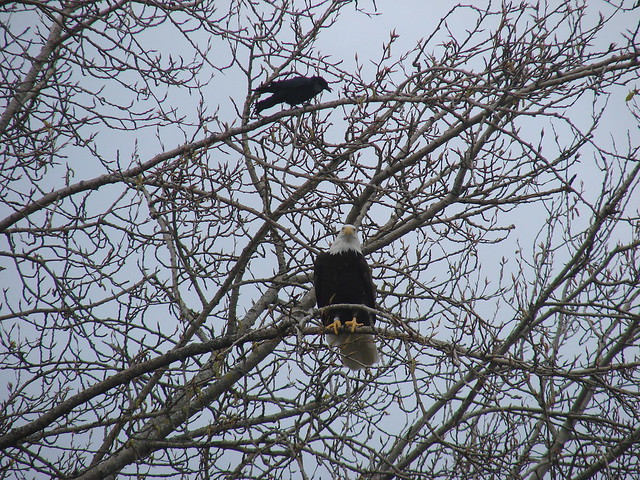
I was standing underneath this adult Bald Eagle, trying unsuccessfully to read the band on its right tarsus, when a tiny woman on a bicycle paused to tell me that if I wanted to see an eagle, I should try Spanish Banks.
I might have stammered a little as I thanked her, but by now, after a year and a bit in Vancouver, I’m pretty much used to it. People here know that there are eagles around, they know it’s a big deal, but not one in a hundred has ever seen one–even when they’re looking straight at them.
I have no idea how many occupied nests are within easy walking distance of our apartment, but just offhand I can think of three; birds from those aeries and unattached non-breeders are in the sky pretty much constantly, visible and often audible from even the busiest Vancouver street.
It’s no great surprise that most Vancouverites don’t notice them, big and noisy as they (the eagles!) are. But the fact that they still talk about them, that they assume that anyone with binoculars must be out looking for eagles, speaks volumes about the cultural weight of these birds. Just knowing they’re out there really matters to the locals, whether they know what they look like or not.



